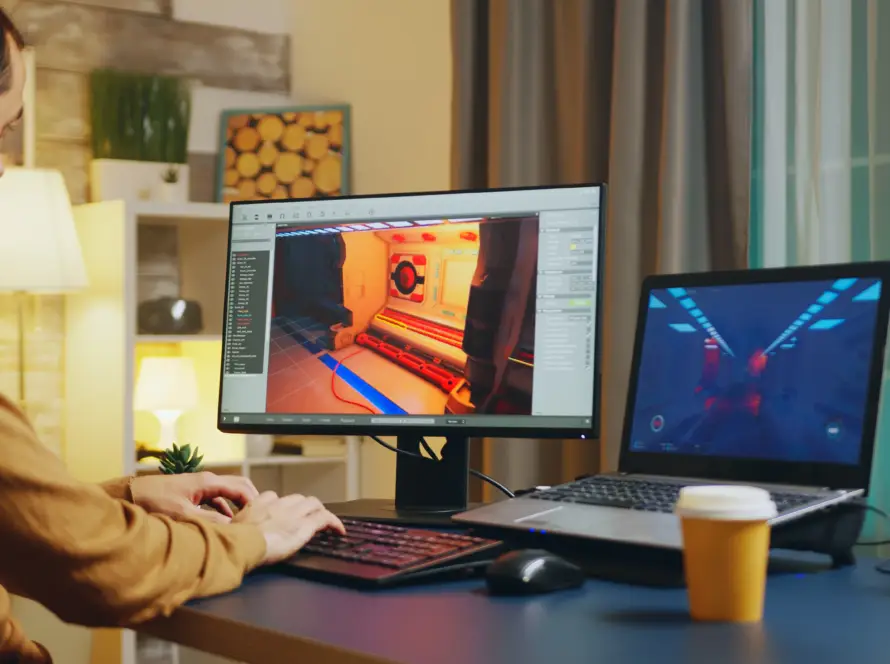Color grading is an essential aspect of video editing that goes beyond mere technical adjustments. It is an art form that allows filmmakers and cinematographers to create a specific mood, enhance storytelling, and elevate the overall visual appeal of their videos. At Motion Grades, our team of expert colorists has mastered the art of color grading, and we’re here to share some of our secrets and best practice tips with you.
From the most subtle changes to the most complex ones, color grading is the most potent weapon in the editing arsenal. So let us dive right into the heart of color grading, guided by our pros.
Understanding Color Grading
Before diving into the process, let’s clarify what color grading entails. Color grading is the post-production technique of manipulating and enhancing the colors of the footage to achieve a desired look or mood. It involves adjusting various color parameters such as saturation, contrast, hue, and brightness. Unlike color correction, which aims to achieve accurate and consistent colors, color grading allows for creative expression and stylization.
The Color Grading Process
To embark on a successful color grading journey, preparing the footage properly is crucial. That’s why we start by correcting the white balance, exposure, and contrast to ensure a solid foundation for grading. This step ensures consistency across multiple clips and sets the stage for more advanced adjustments.
The workflow and creative needs dictate the choice of color grading software we use. There are several options in the market, but DaVinci Resolve is widely considered by professional colorists worldwide as the ultimate color grading tool. And that’s what we use in our color grading studio. Its robust color correction tools, intuitive interface, and real-time collaboration capabilities make it the go-to choice for achieving professional-grade results. By harnessing the full potential of DaVinci Resolve, our team at Motion Grades ensures that your videos receive the highest level of precision and artistry in color grading.
Once we’ve imported our footage into the grading software, we begin adjusting the color parameters. Manipulating primary and secondary color controls allows us to fine-tune the overall color balance and make specific color adjustments selectively. Pay attention to skin tones, as they play a crucial role in the overall look and feel of the video.
Utilizing color grading techniques is where we truly unleash our creativity. We experiment with warm or cool color palettes to evoke specific emotions or create a stylized look. We enhance specific colors to make them pop or achieve a cinematic aesthetic. The possibilities are endless, but it’s crucial to strike a balance between stylization and realism to ensure that the grading choices serve the story and not distract from it.
Best Practices for Effective Color Grading
To achieve professional and consistent results, we follow some best practices in color grading.
Understanding the Intended Mood and Tone
Before diving into the grading process, have a clear understanding of the intended mood and tone of the video. The colors we choose should align with the narrative or theme and evoke the desired emotions in the audience. We take the time to analyze the footage, experiment with different looks, and find the color grading approach that best supports our creative vision.
Consistency and Continuity
Maintaining a cohesive look throughout the video is crucial. Ensure that the colors in each shot blend seamlessly with the rest of the footage, paying attention to shot-to-shot color transitions. Consistency and continuity in color grading contribute to a polished and professional end result.
Collaboration with the Director or Cinematographer
Color grading is a collaborative process that involves effective communication and understanding between the editor and the creative team. Our team works closely with the director or cinematographer to comprehend their vision and translate it into the grading choices we make. This collaboration ensures that the final look aligns with the intended aesthetic of the project.
Avoiding Overgrading
While it’s tempting to go all out with creative grading choices, it’s important to strike a balance and maintain a natural look when necessary. Overgrading can distract from the story and detract from the viewing experience. We use color grading techniques to enhance the visuals without overpowering the narrative, allowing the story to take center stage.
Common Challenges in Color Grading and How to Overcome Them
Color grading is not without its challenges, but with some knowledge and practice, we make sure it’s taken care of:
Dealing with Inconsistent Lighting Conditions
When shooting in different lighting conditions, achieving consistency in color grading can be challenging. We use color charts and reference images to establish a baseline and match colors across various shots. Understanding color theory and how different lighting conditions affect colors also help us make informed grading decisions.
Balancing Colors in Mixed Lighting Scenarios
In scenarios where multiple light sources with different color temperatures are present, balancing colors becomes crucial. Our experts use color balancing techniques, such as adjusting color temperature and tint, to achieve a cohesive look. Color grading tools also offer secondary color correction features to target specific areas affected by mixed lighting.
Addressing Color Banding or Noise Issues
Compressed or low-quality footage can sometimes exhibit color banding or noise artifacts during grading. To mitigate these issues, our colorists utilize noise reduction tools or apply subtle film grain to minimize banding while maintaining visual integrity. Additionally, working with higher-quality footage and utilizing professional codecs can help prevent these problems in the first place.
Managing Color Grading for Different Display Platforms
Videos are viewed on various platforms and devices, each with its own color characteristics. Optimize the grading for different display platforms by considering the aspect ratio, resolution, and format best suited for each platform. By regularly calibrating our editing and grading monitors, our colorists ensure accurate color representation across different screens.
Ready to Make Your Films Shine With Professional Color Grading?
Color grading is a powerful tool that enables filmmakers and cinematographers to bring their artistic vision to life. By understanding the basics of color grading and following best practice tips from our expert colorists at Motion Grades, filmmakers and cinematographers can better understand how to employ color grading to enhance the storytelling.
Embrace the creative possibilities that color grading offers, collaborate with our creative team, and remember to strike a balance between technical precision and artistic expression. With in-depth knowledge, dedication, and practice, we create visually stunning and captivating videos that leave a lasting impression on the audience.
At Motion Grades, we are passionate about color grading and committed to providing exceptional services to filmmakers and cinematographers. If you’re looking for expert color grading solutions that align with your creative vision, contact our team today. Let us help you unlock the full potential of your footage through the art of color grading.



